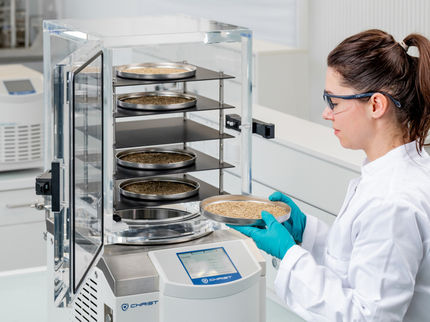To use all functions of this page, please activate cookies in your browser.
my.bionity.com
With an accout for my.bionity.com you can always see everything at a glance – and you can configure your own website and individual newsletter.
- My watch list
- My saved searches
- My saved topics
- My newsletter
Dog odorDogs, as all mammals, have natural odors. Natural dog odor is unpleasant to some dog owners especially when dogs are kept inside the home, as some people are not used to being exposed to the natural odor of a non-human species living in close proximity to them. Dogs may also develop unnatural odors as a result of skin disease or other disorders or may become contaminated with odors from other sources in their environment. Product highlight
Natural dog odorsNatural dog odors are most prominent near the anus, near the ears, and from the footpads. Dogs naturally produce secretions the function of which is to produce scents allowing for species and individual animal recognition by other dogs and for use in scent-marking of territory. This is a feature they share with other canids. Dogs do not produce sweat for thermoregulation. However, they do have sweat glands, called apocrine glands, associated with every hair follicle on their body. The exact function of these is not known, but it is suspected that these are meant to produce pheromones or chemical signals for communication with other dogs. These sweat secretions probably produce an individual odor signal that is recognizable by other dogs. Dogs also have sweat glands on the pads of their paws and on their noses. These are eccrine glands. When these glands are active, they leave the nose and pawpads slightly moist and help these specialized skin features maintain their functional properties. The odor associated with dog paw pads is much more noticeable on dogs with moist paw pads than on those with dry pads. Dogs also have numerous apocrine glands in their external ear canals. In this location they are referred to as ceruminous glands. The ear canals also have numerous sebaceous glands. Together these two sets of glands produce natural ear wax, or cerumen. Micro-organisms live naturally in this material and give the ears a characteristic slightly yeasty odor even when healthy. When infected, the ears can give off a strong disagreeable smell. It is not uncommon for a Vet to sniff a dogs ears to try and detect any potential problem with bacterial or fungal infection. Some owners do this routinely if they have a dog susceptible to ear infections or if they have a breed with heavy, floppy ears which can hide early signs of inflammation. Dogs, like all carnivores, also possess two anal sacs, or scent glands. These sacs communicate with the surface of the skin by ducts which open on either side of the anus. The sacs are lined with apocrine and sebaceous glands. They function to produce a natural secretion that varies from thin and yellowish to pasty and greyish; the secretion has a very strong musty odor. A small amount of this material is deposited when dogs defecate. A large amount may be extruded when a dog is frightened. It is thought that this secretion leaves a signal to other dogs allowing them to recognize the source of the individual fecal deposit. This odor is also likely the signal being sampled when strange dogs investigate one another by sniffing out the anal area. Dogs' anal glands can become swollen and unable to drain naturally, sometimes requiring a visit to the veterinarian or groomer to express the built up liquid. Excessive licking and chewing of the area is one indication of this. Typically, these glands are expressed during routine professional grooming as a preventative measure. Another source of odor that can be considered natural results from a common dog behavior. Dogs like to roll in and mark themselves with some natural products of other animals in their environment, including fecal deposits of natural prey animals. One of their favorites is rabbit droppings[citation needed]. It is thought that this might be a method of communicating with pack members about the other animals that are active in the pack home territory. Un-natural sources of odor on pet dogsPoor grooming of dogs with long, thick or corded hair can cause the haircoat to be a source of unpleasant odor. A coat that is not kept clean and groomed can trap dirt and other substances with unpleasant odors. Skin diseases can cause a dog to have increased or abnormal odor. Allergy can cause increased production of apocrine sweat, which imparts a musty odor. This condition, termed hyperhidrosis, can encourage yeast infection or bacterial skin infection and these micro-organisms produce odors as well. Dogs with seborrhea or keratinization defect, and dogs with deep skin folds(such as on the face of a bulldog), are very subject to secondary proliferation of bacteria or yeast on the skin surface, and these produce odors. Ear disease (otitis) can be a source of odor that varies from yeasty to one resembling sewage as either cerumen or pus accumulates in the diseased ear canal. Anal sac disease or excessive anal sac production can cause a very musty pungent odor. Anal sacs can become abscessed and infecting micro-organisms produce odor. Dental disease or mouth ulcers can produce rotten smelling breath (halitosis). Dental calculus harbors numerous bacteria which produce odor and foul breath. Dental disease can also lead to excessive drooling, and the skin around the mouth can become infected, leading to more odor production. Some medications, such as antibiotics, taken by mouth or antiseptics or medicated shampoos used on the skin can produce odors that owners may find unpleasant. Chlorhexidine is a common disinfectant incorporated in skin medications that some individual owners find to have an unpleasant odor. Likewise, some food ingredients, most noticeably fish meal or fish oil, can produce skin odor in dogs. Flatulence can be a problem for some dogs, which may be diet-related or a sign of gastrointestinal disease. This, in fact, may be the most commonly noticed source of odor from dogs fed cereal-based commercial dog foods. Skunks and dogs often have aggressive encounters and a dog may be sprayed by a skunk. This results in an over-powering musky acrid odor that remains apparent in the 'skunked' dogs coat for many days or even weeks until steps are taken to neutralized the odor. See alsoHyena butter ReferencesScott, Danny W.; William H. Miller, Jr; Craig E Griffin (2001). Muller & Kirk's Small Animal Dermatology 6th Edition. Philadelphia, PA: WB Saunders Company. ISBN 0-7216-7618-9.
Categories: Animal physiology | Dog health |
|||||||||||||
| This article is licensed under the GNU Free Documentation License. It uses material from the Wikipedia article "Dog_odor". A list of authors is available in Wikipedia. | |||||||||||||







